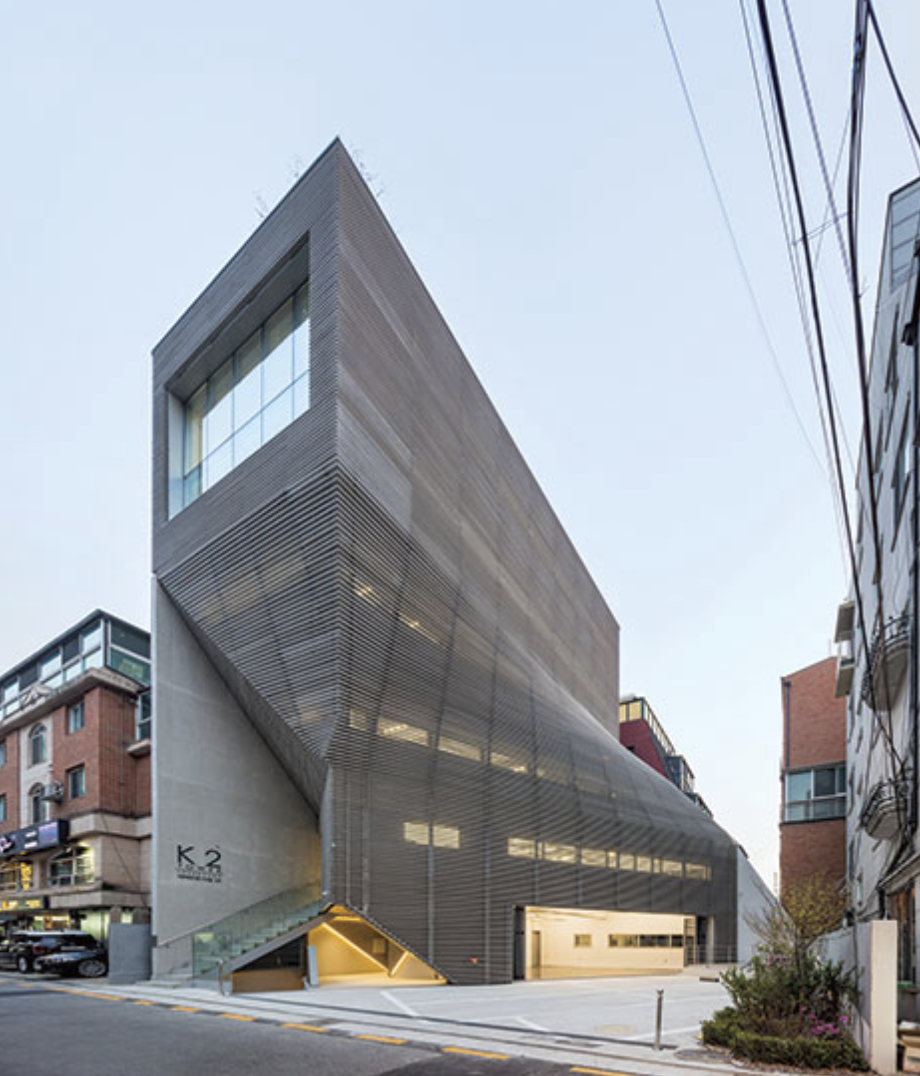Architectural Record: Jo Jinman Architects, Seoul
Published in Architectural Record, June 2019
While many architects hope for ideal site conditions, Seoul-based Jo Jinman, 43, welcomes challenging ones. “I love site restrictions and limits— they give my work a unique identity,” he says. Prior to founding his eponymous firm in 2014, he studied architecture at Seoul’s Hanyang University, focusing on urban design’s potential to enhance social infrastructure—a foreshadowing of the architect’s work to come. He then pursued a graduate degree at Tsinghua University in Beijing, concurrently developing pragmatic skills by establishing the Beijing outpost for Iroje Architects & Planners, and eventually he joined the Beijing and Rotterdam offices of OMA. Unsurprisingly, the latter challenged him to continuously explore fresh solutions for each new project—a methodology that closely mirrors his own design philosophy. Jo’s portfolio of original, often eccentric concepts exemplifies this.
Indeed, no two projects are alike, due to the complexity of their sites. Consider Naesoop Public Library in Seoul, a multilevel structure that Jo built into a hillside. There, he angled the building to reference the surrounding hilly terrain, but also to cleverly form the foundation for outdoor community spaces—including a rooftop amphitheater—and connect users directly to the mountain park above (previously only accessible via a circuitous route).
The designer’s K2 office tower—which sits on a small 39-by-46-foot lot in Seoul—is a contorted rectangular volume, with lower floors set at a 45-degree angle to the street, upper floors set perpendicular, and middle floors rotated to create a transition between the two sections. This composition gives the building its distinctive “twist,” but it also enables the project to meet, for instance, the zoning requirement for a setback to increase daylight.
On yet another tricky site, a narrow plot adjacent to Jaemin Stream in Gongju, a client wanted to build a personal office, multipurpose space, and a café. Aiming to provide all these while preventing obstruction of the community’s river walk, Jo devised an offbeat concrete hemisphere that is glazed on the creek-facing side and shaded with privacy louvers for the office on the upper portion. By pulling the café back from the stream and underneath the second floor’s cantilever, he carved out a public seating enclave while maintaining clearance for the pedestrian path.
Connecting people, city, and nature is a recurring theme for Jo, rendering his other role as a public architect for the Seoul Metropolitan Government a perfect fit. In this capacity, he completed the Overpass Forest, an urban amenity that reclaims areas under three of the city’s highway overpasses for public use. In addition to a flexible indoor space, greenery, and an amphitheater, the Forest features a dramatic canopy of 5,000 mirrors.
As if he didn’t have enough on his plate, Jo is also an adjunct professor at his alma mater, Hanyang, teaching future generations of architects in Korea to champion originality—and even unpredictability.
